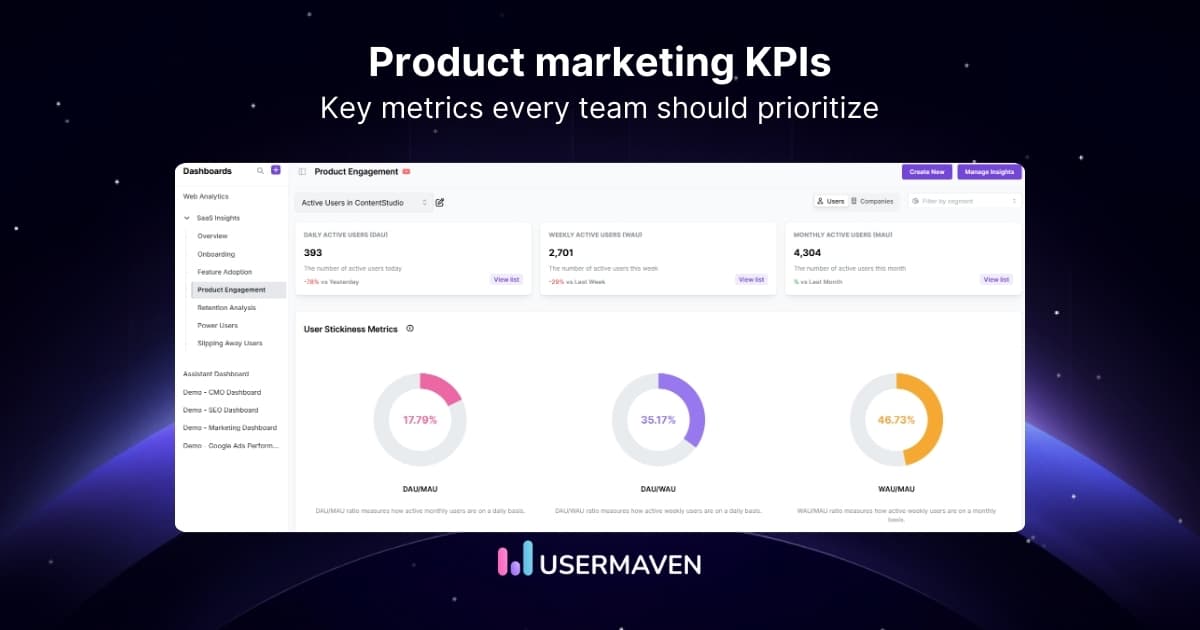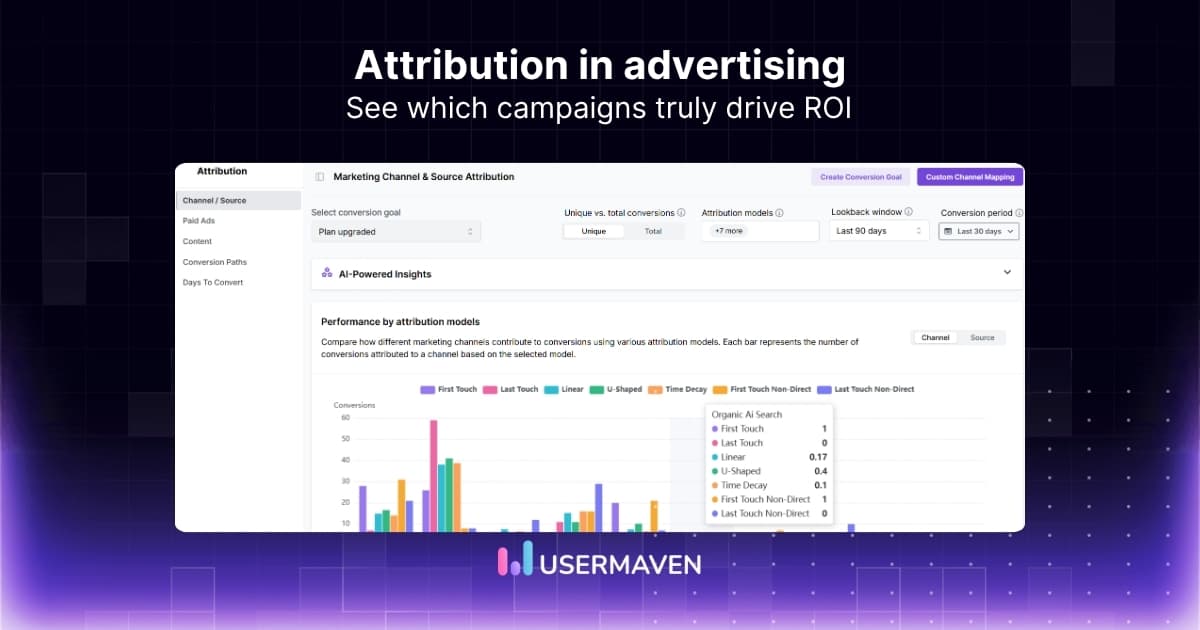The importance of customer retention analysis
Sep 21, 2022
3 mins read
Written by Usermaven

As a business owner, you know that customer retention is important for the success of your company. But what exactly is customer retention analysis? And why should you care about it?
This blog post will explain everything you need to know about customer retention analysis and its importance to your business.
Why customer retention metrics matter
There are a number of reasons why customer retention is important. First, customer retention is less expensive than customer acquisition. You would rather keep an existing customer than acquire a new one.
Second, repeat customers are more valuable to a company than one-time buyers because they tend to spend more over time.
Finally, repeat customers who are satisfied with their purchase are more likely to tell others about the product or service, which can lead to new customers.
How customer retention analysis works
A customer retention analysis is much more than a calculation of your user retention rate. In order to truly understand it, you need to know where, how, and why customers leave your service.
These tips will help you adjust your business’s customer retention strategy and help you achieve sustainable growth.
Identify where customers churn
An analysis of your customer retention metrics can help pinpoint at what point in your customer’s journey they’re most likely to churn out.
By looking at your customer retention rates, you can determine which stage of your customer journey is unstable.
Once you have this information about your customers, you can improve the marketing strategies at vulnerable points in their life cycle to increase user retention rates.
The key to identifying where and why customers are churning is to analyze their activity, from when they first signed up, with an eye on user retention rates and attrition.
Find out why customers churn
By analyzing your retention data, you can figure out which customers are likely to leave and which aren’t. You can also receive feedback from them about why they’re leaving.
Identifying when your customers leave your service can be valuable. Feedback, meanwhile, can explain why someone chooses to leave you.
By modifying your approach and tactics to common causes of churn, you can increase customer loyalty in a short amount of time.
Determine how to improve customer retention
A proper analysis of your retention rates helps you understand where and why your customers are leaving. This lets you pinpoint any weaknesses in your marketing efforts and customer relationship strategies, and fix them.
There are a number of different strategies to improve customer retention. However, it’s important to analyze your retention KPIs before implementing them, as certain techniques may work better for your company than others.
See what's working. Fix what's not. Grow faster.
*No credit card required
How to conduct retention analysis
There are a few key things to keep in mind when conducting a customer retention analysis. First, you’ll want to identify your customer base. This can be done through customer surveys or by looking at customer data analysis.
Once you’ve identified your customer base, you’ll want to look at your customer churn rate. This is the rate at which customers are leaving your business. You can calculate the customer churn rate by taking the number of customers who have left your business divided by the total number of customers you have.
By conducting a customer retention analysis, you can identify areas where your marketing efforts can improve. This will help you keep more customers and grow your business.
There are a few different ways to do customer retention analysis.
One popular method is called cohort analysis. Cohort analysis involves grouping customer cohorts based on when they first started doing business with you.
You can then track how long each group sticks around and what kind of behavior they exhibit. Cohort analysis information can be very valuable in understanding which customers are most valuable to your business.
Another way to do customer retention analysis is through surveys. You can ask customers why they stay with you and why they would leave. This feedback can be extremely helpful in making changes to keep your customers happy.
There are a few ways to measure customer retention rates:
- The number of customers who return to make a purchase within a certain time period.
- The number of customers who renew their subscription or contract within a certain time period.
- The number of customers who continue to use your product or service over a certain time period.
- The percentage of customers who are still active after a certain time period.
No matter which method you choose, customer retention analysis is a valuable tool for any business. By understanding your customers, you can make changes to keep them coming back.

(Source)
Why customer retention rates are low
There are many potential causes of low customer retention rates, but some common ones include poor customer service, high prices, and poor product quality.
Additionally, if a company frequently changes its product offerings or prices, this can also lead to customers feeling frustrated and disengaged, causing them to take their business elsewhere.
How can you improve customer retention rates?
There are a number of ways to improve customer retention efforts, but it really depends on what your specific goals are.
Some things you might want to consider as retention measures are increasing communication with your customers, offering loyalty programs or discounts, and making it easy for customers to give feedback.
Conclusion
Customer retention analysis is an important tool for any business owner. By understanding what factors influence customer retention, you can make changes to your business that will keep your customers coming back.
If you’re not already doing customer retention analysis, now is the time to start. Your business will thank you for it!
Drive business growth
with AI-powered analytics
*No credit card required
Frequently asked questions
How do you evaluate customer retention?
There are a number of ways to evaluate customer retention, but one of the most common is to calculate the customer retention rate.
To do this, you first need to determine the number of customers you had at the beginning of a period and then subtract the number of customers you lost during that period. The resulting number is then divided by the number of customers you had at the beginning of the period.
This will give you your customer retention rate for that period.
What are the 5 customer retention strategies?
Some common customer retention strategies include:
- Providing excellent customer service.
- Offering incentives, loyalty programs, or discounts.
- Developing strong relationships with customers.
- Being responsive to customer feedback.
- Creating a brand that customers can trust.
Why is retention analysis important?
There are a few key reasons why retention analysis is important:
- It can help identify areas where customers are struggling and need more support.
- It can help identify areas of the customer experience that need improvement.
- It can help predict future customer behavior and trends.
- It can help grow the business.
Try for free
Grow your business faster with:
- AI-powered analytics & attribution
- No-code event tracking
- Privacy-friendly setup


